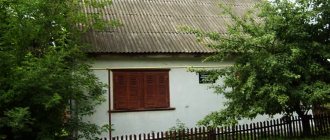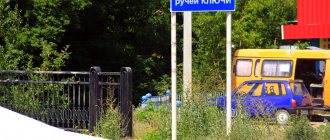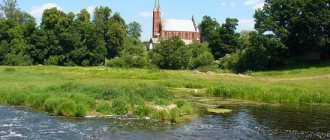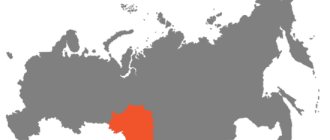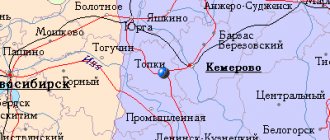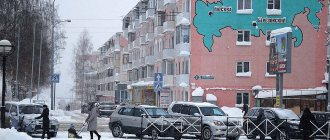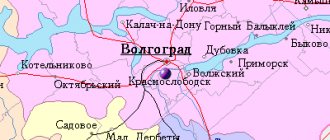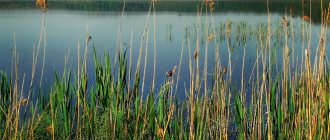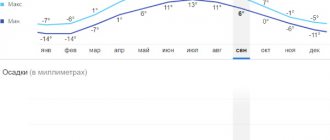| Flag of Novomoskovsk (Tula region) | Coat of arms of Novomoskovsk (Tula region) |
| A country | Russia |
| Subject of the federation | Tula region |
| Municipality | Novomoskovsk city |
| Former names | until 1933 - Bobriki until 1961 - Stalinogorsk |
| Telephone code | +7 48762 |
| Official site | https://www.nmosk.ru (Russian) |
| Ethnobury | Novomoskovsk residents |
| Timezone | UTC+4 |
| Postcode | 301650 (Main Post Office), 301660, 301670 |
| Chapter | Kozina, Elena Anatolyevna |
| Square | 76 km² |
| Day of the city | second Saturday in September |
| Population | ▼ 131,247[1] people (2010) |
| Center height | 240 m |
| City with | 1930 |
| Awards | |
| Vehicle code | 71 |
| Based | 1930 |
| Coordinates | Coordinates: 54°02′00″ N. w. 38°16′00″ E. d. / 54.033333° n. w. 38.266667° E. d. (G) (O) (I)54°02′00″ n. w. 38°16′00″ E. d. / 54.033333° n. w. 38.266667° E. d. (G) (O) (I) |
| OKATO code | 70 424 |
Novomoskovsk (before 1934 - Bobriki; from 1934 to 1961 - Stalinogorsk) is a city in the Tula region of Russia, the center of the municipal formation "city of Novomoskovsk".
The population as of January 1, 2010 was 131,247 people (125th place in Russia and second in the Tula region). The area of the city without adjacent rural areas is 76 km.
The city was founded in 1930 in connection with the start of construction of the largest chemical plant in the USSR. The city is located in the northern part of the Central Russian Upland between the Don and Shat rivers, 220 kilometers southeast of Moscow and 60 kilometers southeast of the regional center of Tula. Within the boundaries of Novomoskovsk is the source of the Don River. It is a major economic and industrial center of the Tula region, one of the cores of the polycentric Tula-Novomoskovsk agglomeration.
Population
The population of Novomoskovsk (including the Sokolniki microdistrict), according to the Federal State Statistics Service, as of January 1, 2010, is 131,247 people, of which 45.1% are men and 54.9% are women. This is 125th in Russia and the second largest in the Tula region. The population of the municipal formation of the city of Novomoskovsk is 143,655 people.
City population dynamics:
| Index | 1897 | 1930 | 1931 | 1932 | 1933 | 1934 | 1939 | 1959 | 1970 | 1979 | 1989 | 2002 | 2003 | 2004 | 2005 | 2006 | 2007 | 2008 | 2009 | 2010 |
| Population (excluding suburbs) | 13 | 14,6 | 28,9 | 37,7 | 60 | 69,8 | 76 | 107 | 134 | 146 | 146 | 134 | 134 | 132 | 130 | 128 | 126 | 124 | 133 | 131,2 |
Novomoskovsk
(Tula region)
OKATO code:
70234501
Founded:
1929
City since:
1930 City of regional subordination
Center:
Novomoskovsk district
The city was formerly called:
| Beavers | 1929 | 1934 |
| Stalinogorsk | 1934 | 1961 |
| Telephone code (reference phone) | |
| 48762***** | 68-1-10 |
Deviation from Moscow time, hours:
0
Geographic latitude:
54°00′
Geographic longitude:
38°18′
Altitude above sea level, meters:
220 Sunrise and sunset times of the Sun and Moon in the city of Novomoskovsk
Architecture
The central part of the city is characterized by a strict arrangement of streets running relative to each other at right angles according to the original development plan. The city center is Sovetskaya Square. Facing the square is the building of the Moscow Region Coal Research Institute. Next to it is a large four-story building with columns, which houses the municipal assembly and the administration of the city and district. The main street of the city, Komsomolskaya, runs through the square. A little to the east it is crossed by Moskovskaya Street, the widest in the city. Together, these two streets set the direction from the center and are a kind of “face” of the city.
The central area combines pre-war, post-war and modern architecture. Among the pre-war buildings, houses with arches, buildings in the constructivist style, for example, the building of the Pobeda cinema on the central square of the city, or a high-rise building with a colonnade on the street, stand out. Moscow. Famous architects, the Vesnin brothers, took part in the implementation of the construction plan.
During the Great Patriotic War the city was severely destroyed. German prisoners of war took part in the restoration of the city. Post-war buildings, in particular, include the building of the drama theater, the building of the city committee (now the city administration), two-story residential buildings built in the post-war years.
The streets are decorated with many green spaces.
What Novomoskovsk is proud of
“Sloboda” begins a series of publications about the regional centers of the Tula region. The second largest city in the region is Novomoskovsk. Let's start with it!
People from all over the region come to Novomoskovsk to take a ride on the children's railway.
Each city has its own “calling” card. Novomoskovsk has several of them at once! This city has a lot to see for visitors. Judge for yourself.
- Children's railway, the only one in the Central part of Russia. Here, starting from the 5th grade, children study railway specialties and work in real railway uniform as drivers and station masters. Anyone can ride the railway. The length of the road is 2.3 km, there are 3 stations: “Berezki”, “Pionerskaya” and “Source of the Don River”. There is a section along the way where the “children’s” train runs side by side with the real one.
- The Don begins in Novomoskovsk.
- Near Novomoskovsk there is the Pronsky Reservoir, the largest and deepest in the region: its length is 26 km, width - 2 km, depth up to 25 m. The area of the reservoir is 1620 hectares.
- Unique boulevards between the roadways of Moskovskaya and Komsomolskaya streets - there are no such boulevards in any city in the Tula region.
- Novomoskovsk is also famous for the fact that in October 2008, the world’s first Internet voting took place there in municipal elections: citizens elected deputies using an electronic system after the traditional “paper” vote. 13 thousand citizens took part in the experiment.
The legendary Don River originates in Novomoskovsky City Park. The source of the Don is called the Urvanka stream here.
OUR REFERENCE Novomoskovsk arose as the village of Bobriki, in 1930 it received the status of a city. From 1934 to 1961 it was called Stalinogorsk (until 1945 it was the capital of the Mosbass territorial region as part of the Moscow region, after which it was transferred to the Tula region), and in 1961 it received the modern name - Novomoskovsk. The city owes its appearance to the construction of the chemical giant NPO Azot (now NAC Azot), as well as the development of the Moscow Region coal basin. In 2007, Novomoskovsk won the All-Russian Golden Ruble competition as the most economically developed among large cities.
LOCATION 888 sq. km is the area of the city. 236 m - at this height above sea level the city is located and is located at the highest point of the Central Russian Upland. 55 km to the southeast - this is how Novomoskovsk is located relative to Tula.
IMPROVEMENT of 7 microdistricts. More than 100 streets, parks and squares. 2 parks of culture and recreation. 4 times over the past 10 years, Novomoskovsk has been among the top three according to the results of the All-Russian competition for landscaping and gardening.
POPULATION 160 thousand people live in Novomoskovsk, of which: 70 thousand children and adolescents under the age of 20, 50 thousand middle-aged - from 20 to 55 years, 40 thousand people over 55 years old.
INDUSTRY More than 100 industrial enterprises and construction organizations. More than 20 billion rubles - the volume of industrial production. 37.39 billion rubles. — value of exported goods in 2007.
BY THE WAY STAR PEOPLE OF NOVOMOSKOVSK
| Vsevolod Rudnev (1855-1913). Hero of the Russian-Japanese War, rear admiral of the Russian Imperial Navy, commander of the cruiser "Varyag". The Rudnev family owned an estate near the village. Yatskaya, Venevsky district (now Novomoskovsky district). |
| Vasily Starodubtsev , ex-governor of the Tula region. He worked in Novomoskovsk: from 1955 - a bulk fastener, a mechanic-driver of mining machines at mine No. 36 of the Stalinogorskugol trust, in 1964-1997. - Chairman of the collective farm named after. Lenin. |
| Irina Saltykova , singer and actress. Born on May 5, 1966 in Novomoskovsk. Graduated from school No. 20, construction technical school in Novomoskovsk. |
| Olga Vatlina , singer, lead singer of the group “Assorted”. Born on July 29, 1983 in Novomoskovsk. Graduated from Novomoskovsk General Education Lyceum. |
| Ksenia Semenova , gymnast, world and European champion, participant in the Olympic Games in Beijing 2008. Born on October 20, 1992 in Novomoskovsk. |
Olga SMIRNOVA. Photo by Sergei KIREEV.
Map
| Novomoskovsk: maps |
Novomoskovsk: photo from space (Google Maps) Novomoskovsk: photo from space (Microsoft Virtual Earth)
| Novomoskovsk. Nearest cities. Distances in km. on the map (in brackets along roads) + direction. Using the hyperlink in the distance , you can get the route (information courtesy of the AutoTransInfo website) | |||
| 1 | Donskoy | 4 (9) | YU |
| 2 | Nodal | 9 (8) | Z |
| 3 | Dubovka | 15 () | SW |
| 4 | Kimovsk | 15 (24) | IN |
| 5 | Gritsovsky | 17 (11) | NW |
| 6 | Kireevsk | 25 (28) | Z |
| 7 | Bogoroditsk | 29 (37) | SW |
| 8 | Borodinsky | 31 (49) | Z |
| 9 | Bolokhovo | 32 (37) | Z |
| 10 | Tovarkovsky | 36 (49) | YU |
| 11 | Venev | 37 (58) | WITH |
| 12 | Lipki | 39 (49) | Z |
| 13 | Sovetsk | 44 (56) | Z |
| 14 | Oktyabrsky (Ryazan region) | 46 () | NE |
| 15 | Tula | 49 (52) | NW |
| 16 | Pervomaisky | 51 () | Z |
| 17 | Shchyokino | 51 (59) | Z |
| 18 | Mikhailov | 53 (67) | NE |
| 19 | Volovo | 53 (73) | YU |
| 20 | Plekhanovo | 54 () | NW |
| 21 | Serebryanye Prudy (Moscow region) | 57 (72) | NE |
| 22 | Leninist | 62 (67) | NW |
| 23 | Warm | 63 (69) | SW |
| 24 | Yasnogorsk | 65 (89) | NW |
| 25 | Kurkino | 68 (90) | YU |
| 26 | Plavsk | 74 (89) | SW |
| 27 | Zakharovo (Ryazan region) | 75 (92) | NE |
| 28 | Skopin | 84 (128) | IN |
| 29 | Pronsk (Ryazan region) | 85 (144) | IN |
| 30 | Miloslavskoe (Ryazan region) | 88 (163) | SE |
a brief description of
Located on the Central Russian Upland, in the Moscow region coal basin, at the source of the river. Don, 60 km east of Tula. Railway station.
Territory (sq. km): 888
Information about the city of Novomoskovsk on the Russian Wikipedia site
Historical sketch
It arose in 1929 on the site of the village of Bobriki (the former possession of the Bobrinsky counts) in connection with the construction of a chemical plant, new coal mines, a state district power station and the dams of the Lyubovsky and Shatovsky reservoirs. The name of the village is based on its location on the Bobrik stream, and the hydronym is based on the habitat of the animal beaver in this stream.
The city since 1930. Until 1934 it was called Bobriki. In 1934-61 - Stalinogorsk.
During the Great Patriotic War of 1941-45, it was occupied by Nazi troops from November 22, 1941. It was liberated on December 11, 1941 by troops of the Western Front during the Tula operation.
Since 1961 - Novomoskovsk. The name, obviously, comes from the city's location in the Moscow region coal basin.
Economy
Novomoskovsk is a major center of Russian production of mineral fertilizers and other types of chemical products.
Leading enterprises: PA - "Azot", "Novomoskovskbytkhim". JSC "Orgsintez", "Polymercontainer", "Gips", "Ogneupor", "Stroykonstruktsiya".
Factories: car repair, machine-building, Mayak (mine automation), food industry enterprises.
GRES.
In the Novomoskovsk region, grain crops, sugar beets, potatoes, vegetables, berries and fruits are grown. They raise cattle, pigs, and poultry.
Large Novomoskovskoe deposit of stone gypsum. Deposits of limestone and loam.
Main enterprises
CHEMICAL INDUSTRY
OJSC "Azot"
301670, Tula region, Novomoskovsk, st.
Svyazi, 10 Offers:
Mineral fertilizers, ammonia, organic synthesis products, chlorine, caustic soda, nitric acid, methanol
OJSC "Novomoskovskbytkhim"
301670, Tula region, Novomoskovsk, Komsomolskoye sh., 64
Offers:
synthetic detergents, varnishes on condensation resins
BUILDING MATERIALS INDUSTRY
JSC JV "Gips KNAUF"
301670, Tula region, Novomoskovsk, st.
Grazhdanskaya, 14 Offers:
Extraction of gypsum stone, production of gypsum products
MEAT AND DAIRY INDUSTRY
JSC "Zori Dona"
301670, Tula region, Novomoskovsk, st.
Novaya, 21 Offers:
Dairy and meat products
Culture, science, education
Branch of the Russian Chemical Technology University.
Drama Theater.
Museum of the History of the City.
Universities of the city
Moscow Social and Humanitarian Institute (Novomoskovsky branch)
301650, Tula region, Novomoskovsk, st. Labor reserves, 21
Novomoskovsk Institute (branch) of the Russian Chemical-Technological University named after. DI. Mendeleev
301665, Tula region, Novomoskovsk, st. Friendship, 8 WWW: https://www.nirhtu.ru/
Novomoskovsk branch of the University of the Russian Academy of Education
301650, Tula region, Novomoskovsk, st. Berezhny, 12 WWW: https://urao.nmsk.ru/
Museums, galleries, exhibition halls
Museum "Spasskoye" 301686, Tula region, Novomoskovsk, Spasskoye village, st.
Central, 4a Phone(s): (48762) 9-01-46 Website: https://www.museum-tula.ru/ Museum of the History of Novomoskovsk 301670, Tula region, Novomoskovsk, st. Komsomolskaya, 28 Phone(s): (48762) 6-0378 6-0304
Architecture, sights
Novomoskovsk consists of two main parts: the industrial northern part, and the residential southern part, separated from it by a 12-kilometer zone. In the southern part of the city there are cultural, administrative and commercial institutions.
40 km from Novomoskovsk, near the village of Gremyachee, there are karst caves.
| Population by year (thousands of inhabitants) | |||||||
| 1931 | 14.6 | 1979 | 146.8 | 2003 | 134.1 | 2014 | 128.0 |
| 1939 | 76.2 | 1982 | 147 | 2005 | 129.8 | 2015 | 127.2 |
| 1956 | 109 | 1986 | 147 | 2006 | 127.8 | 2016 | 126.5 |
| 1959 | 107.9 | 1989 | 146.3 | 2007 | 125.7 | 2017 | 125.6 |
| 1962 | 114 | 1992 | 145.4 | 2008 | 124.1 | 2018 | 124.8 |
| 1967 | 126 | 1996 | 142.9 | 2010 | 131.2 | 2019 | 123.2 |
| 1970 | 133.9 | 1998 | 141.0 | 2011 | 131.4 | 2020 | 122.3 |
| 1973 | 142 | 2000 | 138.1 | 2012 | 130.2 | 2021 | 121.7 |
| 1976 | 145 | 2001 | 135.9 | 2013 | 128.9 | ||

